Cat tray: types, sizes and selection rules
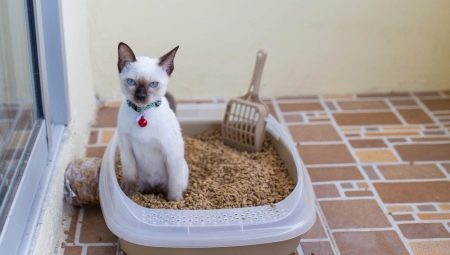
With the appearance of a kitten in the house, you have to think about buying a tray. It is not difficult for a common man to get confused in the choice, because the range of these products is very wide. You can find different models on store shelves, and this is what confuses you, because you want to choose the best option for your pet.
How to determine the optimal variety, as well as how to choose the right size for the product - we will consider in more detail.
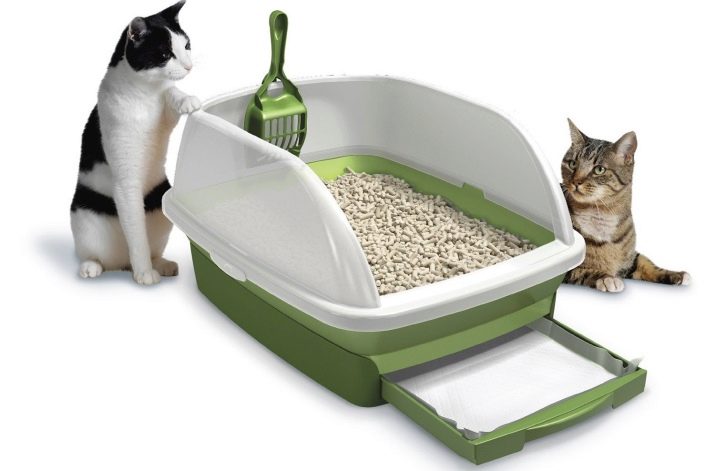
The main types, their pros and cons
Tray models can be classified according to several criteria. For example, they are common linear and angular. In terms of complexity, they can be simple and complex. By type of use, they are divided into manual and automatic. For the price, they allow you to choose an option for owners with different budgets.
According to the durability of use, modifications can be standard and disposable. There are also road-type models or folding structures in the lines, which are necessary for a cat participating in exhibitions or often visiting guests with the owner. In general, trays can be classified into 2 main types: open and closed. Each line of varieties has its own categories and features.
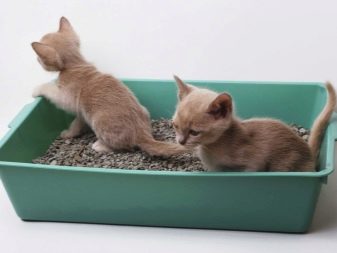
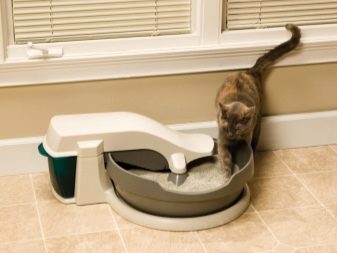

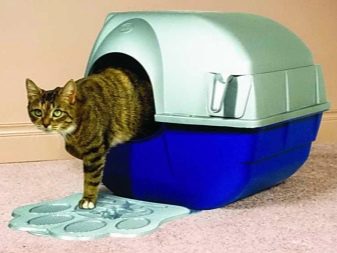
Open
Open trays are traditional, presented in the form of typical rectangular plastic boxes, or they can be supplemented with grates and sides.
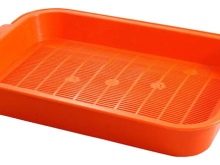
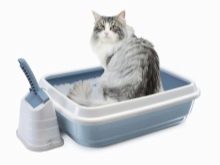
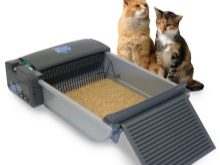
Conventional
The advantages of such modifications are reasonable price and compactness - they do not take up much space. In addition, they are easy to use, visually open to control cleanliness and are easy to wash and change the filler.On the downside, regular cat litter boxes need to be cleaned frequently, and sometimes daily.
In addition, when using them, the filler is often spread outside the tray. Another disadvantage is unaesthetic: dIt is convenient for cleaning, but in general, looking at the tray with animal excrement is unpleasant.
Products of this type require a rubberized mat that has to be placed under the tray in order to increase the stability and anti-slip of the box. In addition, the mat will reduce the wear of the filler granules around the house.
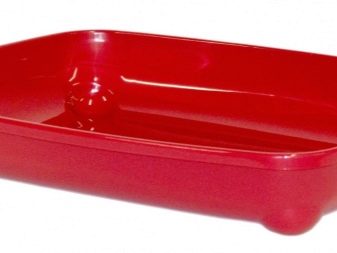
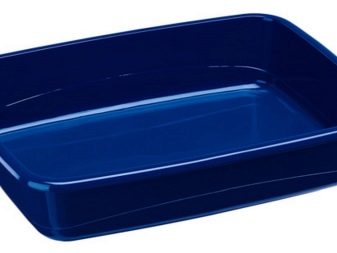
With lattice
Open type modifications with a grate are more convenient. In fact, these are the same boxes, but on top they have grids with holes of different sizes and numbers. The filler is poured into them to the bottom, which makes it possible to exclude the deterioration of the granules around the house. These products are inexpensive, due to the filler used, they do not emit an unpleasant odor.
The disadvantage of the products is the need to clean the grate every time the animal completes its natural needs. In addition, fecal residues can become trapped between the grill openings, making cleaning difficult. Another nuance is the complexity of the selection of the tray, because manufacturers often make such models from soft plastic. In addition, it is difficult to find a product of this type for large breed cats.
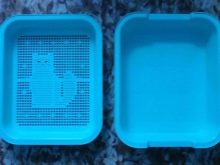
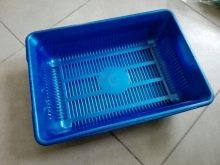
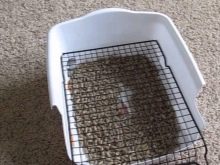
With high sides
Cat trays equipped with high sides are classified as open type models. The design of the product is an open tray with sides, which are attached to the edges with special clips. In this case, the model can have a mesh grate and a special paddle for removing excrement and swollen filler granules. These models are designed for cats that throw litter outside of the litter box or for cats defecating past the litter box.
The convenience of the models is the possibility of using plastic bags for the pallet, which simplifies the cleaning of the used filler. Due to the high sides, the filler remains inside the boxes. The trays themselves are more stable, they are suitable for cats and cats of large breeds (Bobtail, Maine Coon).
However, more space is needed to accommodate these litter boxes. In addition, in the rulers there are products with weak side clamps.
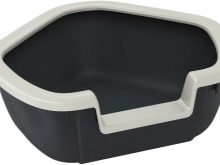
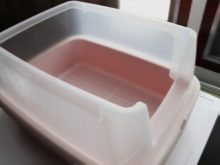
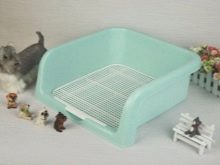
Closed
Modifications to closed-type cat trays are outwardly more aesthetic and have a good ability to contain unpleasant odors.

Small houses
This is a great choice for cat owners who do not want to keep the toilet door closed, allowing the cat to enter it as needed. Structures of this type have a door, which is often removed after purchase to adapt to the toilet, so that the cat does not think that he is going to the bed.
The advantages of these models are the cleanliness of the surrounding space, the calmness of shy cats, the impossibility of getting excrement outside the box, aesthetic appeal.
The products also have disadvantages. These are large sizes, which means more space is required for the tray. In addition, these products are more expensive, they need to wash not only the bottom, but also the top. Sometimes cats do not recognize such toilets, which they have to struggle with for a long time.
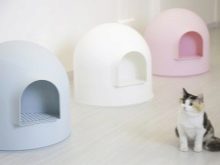
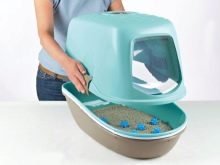
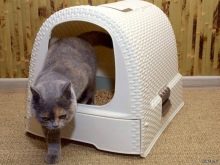
Dry closets
Progress does not stand still, and therefore cats today can have dry closets. In fact, these models are similar to conventional closed-type designs, with the only difference that they have a paddle and a charcoal filter to absorb unpleasant odors. Filtration plates are designed for 5-7 months; it is recommended to put antibacterial napkins on the bottom of such trays to prevent the growth of bacteria.
The disadvantage of the designs is the need for constant cleaning of solid waste. These models are more expensive than standard closed-type counterparts. However, they are convenient, have a drawer for filler, are practical to use and aesthetically pleasing.These products are manufactured by companies in Japan and Italy, designs have doors, may differ in size and shape.
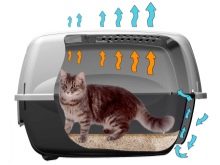
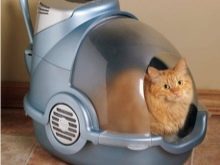

Automatic
Automatic cat litter boxes are a kind of know-how in the organization of the litter issue. Unlike other varieties, the models of this line are equipped with a self-cleaning function, which significantly raises the price tag of any tray. These trays have a connection to the sewerage and cold water system, as well as electricity. In fact, this is a stand-alone device with a full-fledged installation, requiring the purchase of a filler and timely replacement of cartridges.
The thing is functional, but the self-cleaning procedure takes about half an hour. However, this does not happen when the animal is in the tray, which is what the sensors are responsible for. The advantages of products of this type are automatic cleaning after each visit to the toilet by the cat, the disinfection procedure, the economy of the filler, the elimination of unpleasant odors, as well as the protection of the surrounding space from dust and granules.
The disadvantages include the need for independent connection to water supply and sewerage systems, electricity consumption, high cost, lack of mobility and noise during drying.

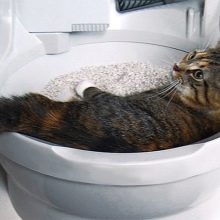

Models and manufacturers
Today, the list of popular trays is huge, which is explained by the preferences and financial capabilities of the breeders. The top includes the most relevant models of litter boxes for cats.
- "ViSi Close" - a capacious rectangular plastic tray with high sides and dimensions 420x335x140, 490x380x160 mm. Produced by Chinese manufacturers, may include a scoop, mesh and top cover. Often it is an element of tray cabinets.

- DD Style "Dogush" - an analogue of a budget type with a mesh, made of colored plastic by the Dunya Dogush Plastic company. It has fixed high sides with a snap-in system and prevention of filler spreading, dimensions can be 495x360x125, 495x360x167 mm.
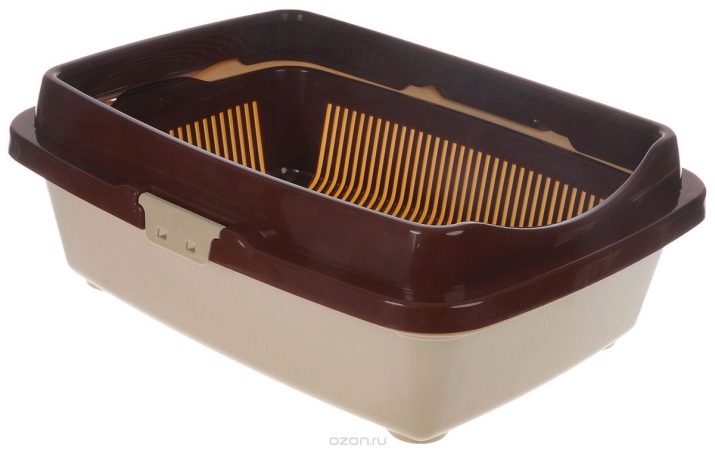
- Marchioro goa - high-quality plastic tray from the Italian manufacturer Marchioro on non-slip rubber legs, having the parameters 370x270x120, 430x330x140, 500x370x170 mm. It has high removable sides with secure locks.
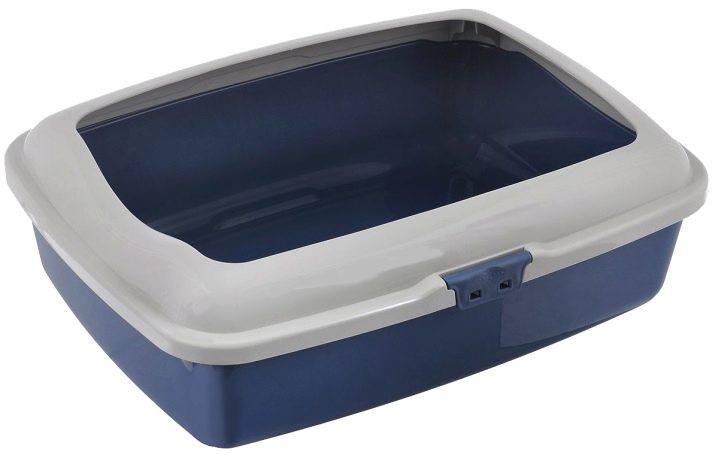
- Triol closed house - a cat's tray from Triol SPB LLC in the form of a corner-type house with parameters 570x430x400, 513x388x433 mm. A kind of box for shy cats, suitable for representatives of large cat breeds.
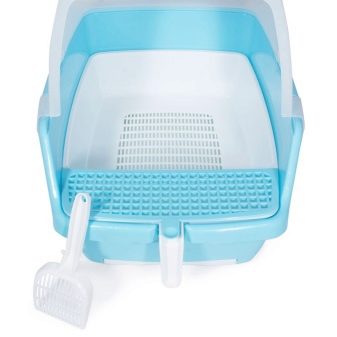
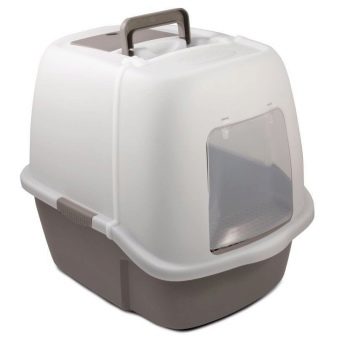
- Closed tray Imac Zuma - a product of the Italian brand Imac with parameters 400x560x425 mm. The complete set includes: tray box, carbon cartridge, removable frame, bags for waste filler and a shovel.
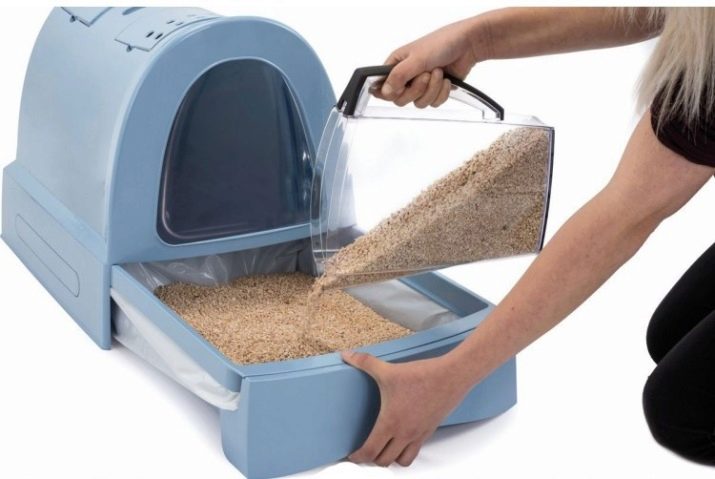
- Ferplast jumpy - modification of the closed type with a top entry or mesh lid with a hole for the cat, preventing the entry of other pets of the breeder. The parameters of the trapezoidal model of the Italian manufacturer Ferplast are 575x388x390 mm.
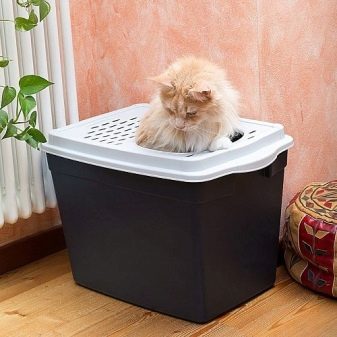

- Curver pet life - a closed-type dry closet with a streamlined shape with an oval entrance and a stylish design. The parameters of the model are 510x390x400 mm, in the line the tray is presented in two shades, the product is collapsible, has a pull-out tray, a scoop, a grid for the pallet, and a carbon cartridge.
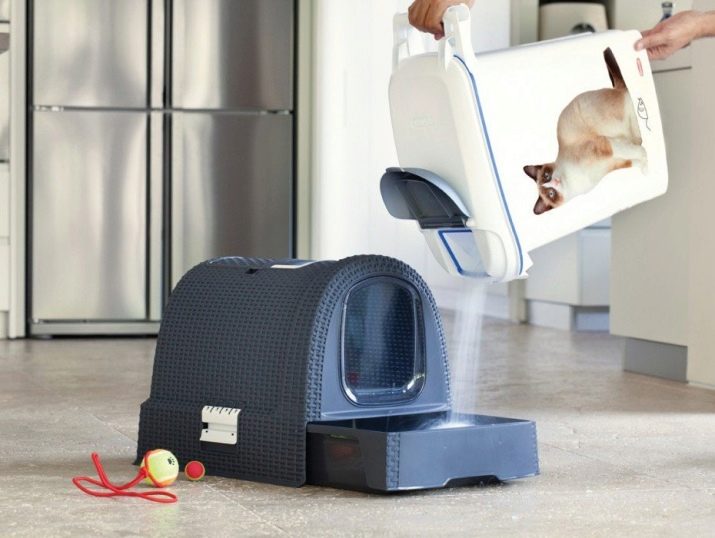
- Kao Cat - dry closet Nyantomo Seiketu Toire of the Japanese manufacturer, made of plastic. Consists of support tray, pull-out tray, mesh and top cover. The parameters of the model are 550x430x400 mm. The complete set includes a shovel for the removal of solid waste.
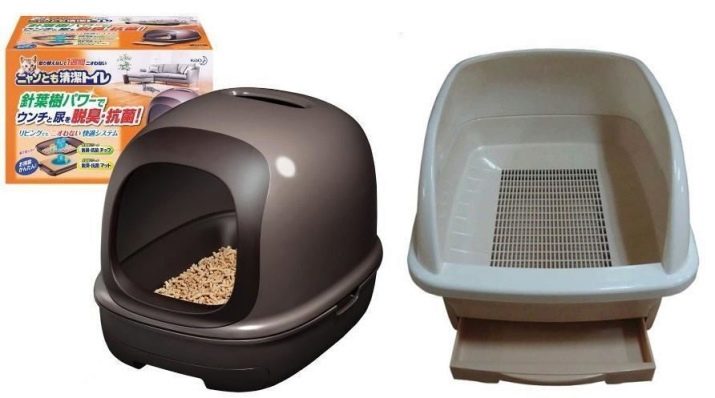
What to look for when choosing?
When buying a litter box for your furry pet, there are a number of factors to consider. For example, the product must be stable so that it does not slip on the toilet floor during use. The existing frame should be removable to facilitate cleaning the tray.
It is also important to consider the fact that there are cats who prefer to defecate while standing. In this case, it is more expedient for them to buy open-type models.
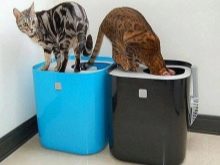

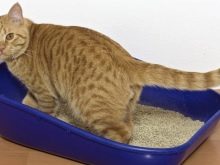
Bulky, closed products must be constantly disassembled and reassembled for cleaning. Some even scare cats with the noise of cleansing. Some options are made in the form of pads for training the animal to the toilet. Other purchase criteria are worth noting.
- Manufacturing material must be durable and of high quality. An unpleasant odor should not emanate from it, the plastic itself should be thick and resistant to bending so that the pet does not push it with its weight. Cats reject the unpleasant smelling plastic, they do not fit such trays.
- Type of construction are selected based on the character of the cat. If she is shy or loves to rummage around and throw around filler, you can choose the closed type option. An open tray is enough for a kitten. Open boxes are also convenient when two cats go to the same tray.
- The dimensions of the trays are important, because small boxes are only good for kittens. For large individuals, more spacious options are selected so that the animal can turn around in the tray. As for closed-type products, when choosing them, the height parameter becomes a key factor: it should allow the pet to straighten up inside the house.
- Board height in open models should be selected taking into account the age of the cat. If this is a very small kitten, he will not be able to overcome the barrier on his own to get inside the box. An adult should choose the option with rounded sides.
- The best models are considered products with a mesh grid and the possibility of using filler.... The granular material will help to trap the unpleasant odor that occurs after the cat goes to the toilet.
- It is important to pay attention to the convenience of cleaning. In this regard, open structures of the direct type are more convenient. In closed models, it is more difficult to clean the deposited plaque from urine and feces. In addition, it is not visible in them when it is time for cleaning.
- You need to look closely at the width of the product. No matter how much you want to put a cat litter in an apartment or house in the most rational way with saving space, narrow options for a cat are not suitable. Insufficient width can cause the animal to shit past the tray.
- In most cases, cost is the deciding factor in the purchase. Of course, each buyer counts on a certain amount. However, if the kitten is small, there is no need to purchase an expensive litter box for it, into which it will not be able to walk. The first box can be simple or small. In the future, you can choose something more expensive for your pet.

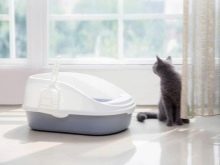
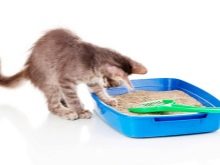
In addition, when choosing a particular model, you should pay attention to the possibility of using bags or garbage bags, which makes it more convenient to remove the spent filler and clean the tray itself. The advantage of the product will be the scoop included in the package. It will make it easier to clean up solid waste and used filler.
If desired, you can purchase a corner box. The model can be simple without a grid or with a lattice, but its parameters should accommodate the animal without restricting its movements. Otherwise, the cat will look for another latrine. To reduce the likelihood of scattering the filler, you can choose a model with a corner wall. On average, the dimensions of such a product can be 510x510x155 mm.

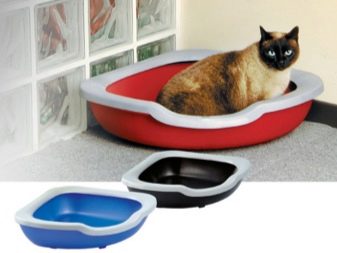
How often do I need to change the litter box?
Depending on the type of construction, the cleaning of the tray is carried out at different time intervals. It is longer in self-cleaning models and shorter in open boxes. Simple trays should be washed every time the animals visit them. The same rule is for open items with a wire rack, it is washed daily, as soon as the cat has relieved its need.
If you ignore frequent washing, an unpleasant smell accumulates in the tray, and the cat, as a squeamish creature, will cease to recognize it as its latrine. It will be unpleasant for her to step on wet or spent filler with her paws.Much depends on the number of pets and the type of litter used in the litter box. It swells and increases in size in different ways, has its own nuances of use.
If wood litter is used in the tray, it must be changed once a week. After all the granules are scattered or swollen, the tray is washed with a special agent, dried and a fresh portion of the filler is poured. If there are two cats in the house, you will have to change the filler and wash the toilet twice a week (except for the constant washing of the grate). Sometimes the situation is such that cleaning can become unscheduled.
Such cases include troubles in the form of loose stools or feces sticking to the sides and walls of the tray.
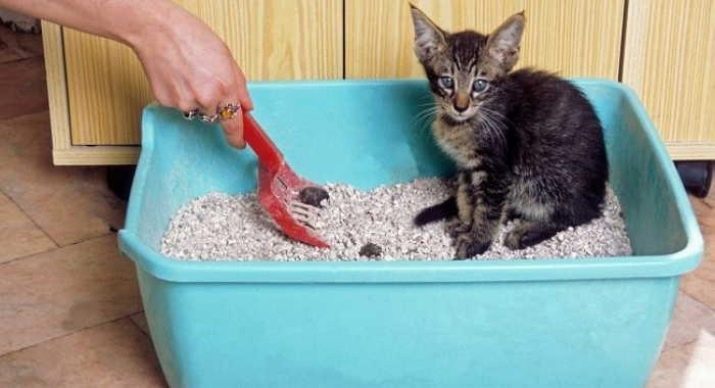
If the filler is silica gel, the toilet is changed every two weeks. Lumps with solid waste are removed as soon as they are found. Mineral granules are changed once a week, if there are two cats in the house, the toilet is cleaned more often.
Exploitation
Trays without grates imply the obligatory use of filler. For these boxes, you can purchase plastic bags or trash bags by placing them on the bottom, and pouring filler granules on top. Depending on the type of granular material, the amount of wood filler is sufficient to barely cover the bottom. Silica gel will need no more than 2 cm in thickness, a mixed product of clay and sawdust - no more than 2-2.5 cm, sand - up to 3 cm.
The filler must be used correctly. For example, you need to fill a tray without a grid with them in larger quantities. If the model has a grid, the number of granules should not be large, because when moisture gets on them, they can increase in size not only twice, but even triple. When pouring working material, it must be borne in mind that there must be free space between it and the top of the grate. When the granules are enlarged, they should not rise through the holes in the mesh.
Dispose of used filler in the trash can. To make things easier, it's worth wrap the box in a plastic bag. After the granules are swollen, the bag is removed from the box and disposed of. The tray itself is washed to get rid of the gradually eating odor. Then it is dried and a new bag is put on again, filler is poured on top.
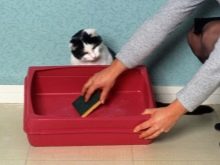
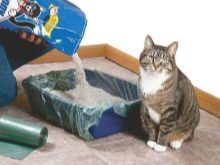
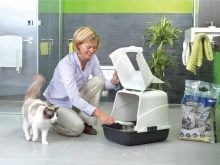
Closed models are washed at least as often as open ones. Models built into the sewage system have their own purification systems. As a rule, all the nuances of washing are indicated in the documentation attached to the product. Flushing for other modifications occurs 20 seconds after the cat leaves the tray. This is done through a built-in touch sensor.
Self-cleaning toilets are convenient and hygienic. Bags in automatic models must be removed once a week. Cleaning is done by pressing the lever. Other devices do not need the usual filler. Such toilets are filled with special granules, through which liquid excrement flows into the drain. Solid waste is collected by means of a rotating scoop.
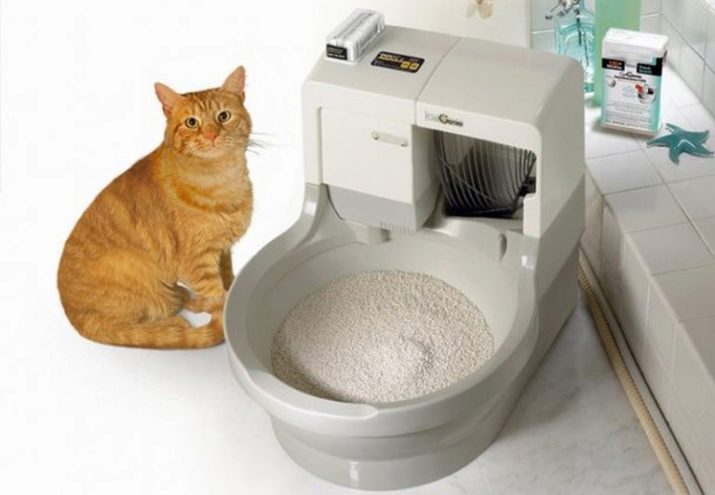
The automation is also convenient because the owner can set the optimal cleaning time. The reservoir is self-cleaning, the granules are rinsed and dried. The installation of such a toilet is carried out by a plumber, it is connected to the sewer and electricity. These products have been calculated for cats of all known breeds.
Models with a self-cleaning function can have different operating principles. Some of them have a special device that collects excrement and sends it to the lower tank, leaving the worker clean. These models need excrement bags. However, the disadvantage of such designs is that it will not be possible to get rid of the smell until the owner throws out the bag of excrement.
As for the issue of disposal of the filler in the toilet, this is unacceptable. When liquid enters the granular material, not only absorption occurs, but also an increase in the granules.This can turn into a blockage in the sewer system and, as a result, create an emergency. Considering that pipes are often clogged up anyway, it is highly undesirable to do this.
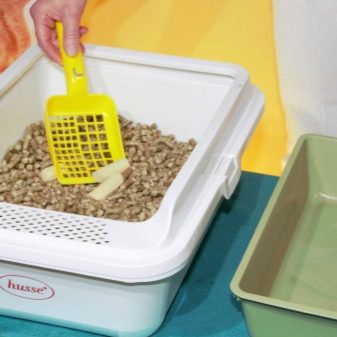
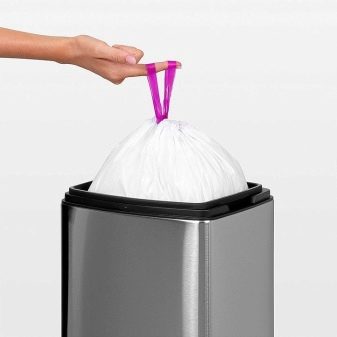
See the following video for an overview of the tray.
































